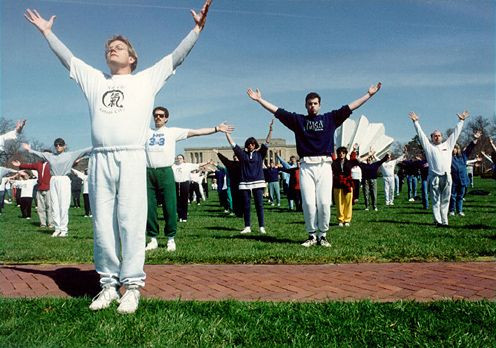Diet Or Exercise? Starting Strong With Both Key to Keeping Healthy Habits

If you find eating healthy and exercise hard habits to keep, starting off small is the solution. People who make positive changes in their diet and exercise simultaneously are more likely to keep healthy behaviors, compared to those who made changes one at a time, a new study shows.
Published in the upcoming issue of Annals of Behavioral Medicine, these findings may appear obvious at first, but until now the standard advice touted by many doctors and nutritionists is that healthy change is achieved by smaller steps toward a bigger goal; in other words, through baby steps.
This study, led by Dr. Abby King, professor of health research and policy and of medicine at Stanford University School of Medicine, debunks conventional wisdom. While a lot of researchers are working to develop diet and exercise interventions to stem the onslaught of obesity and chronic disease caused by unhealthy living, few researchers have cared to examine the order of interventions.
Researchers recruited 200 participants ages 44 and older who ate unhealthily, exercised less than recommended, and described themselves as too busy and stressed to make healthy lifestyle choices. They were separated into four groups. The first group started off by increasing their physical activity and eating healthier. The second group made dietary changes first, then attempted changes in exercise four months later. The third group changed exercise habits first, followed by dietary changes later. The fourth group served as a control group, receiving no intervention.
Health educators coached study participants over the phone for 10-15 minutes once a month over the course of the year. Exercisers received pedometers and recorded their physical activity on a calendar, later reporting it to their coaches. As they tried to eat healthier, participants were supplied with recipes and also reported their diet to their coach.
Participants were encouraged to meet national guidelines for exercise; 150 minutes of light to moderate exercise per week over several days. Their nutritional goals were determined by the American Heart Association healthy diet, which includes 5-9 servings of fruits and vegetables a day and requires that less than 10 percent of calories come from saturated fat.
People who started by changing both diet and exercise simultaneously on average continued to meet all three goals--exercise, more fruits and veggies, less saturated fat--one year later. People who started exercising first and dieting later did almost as well, meeting all the goals except limiting saturated fat intake.
To explain why, researchers propose that adopting one change is such a challenge that making a second change becomes too hard to maintain. Perhaps it's best to approach a healthier diet and physical exercise as one big change -- that of a healthier lifestyle.
As for why exercising first and dieting later resulted in better behaviors, King guesses that time might be a key difference. For these busy participants, finding time to exercise was harder than simply eating more healthily.
Another big factor in the participants' success was the ongoing telephone coaching from health educators.
While weight loss was not a focus of the study, researchers note that many weight-loss programs encourage people to start with dieting and integrate exercise later, contrary to their findings.
"These health behaviors aren't things that we change over a six-week period and then our job is done," King said. "They're things that people grapple with their whole lives, so to develop 'touches' of advice and support in a cost-efficient way is becoming more and more important."
More information about the study can be found here.



























